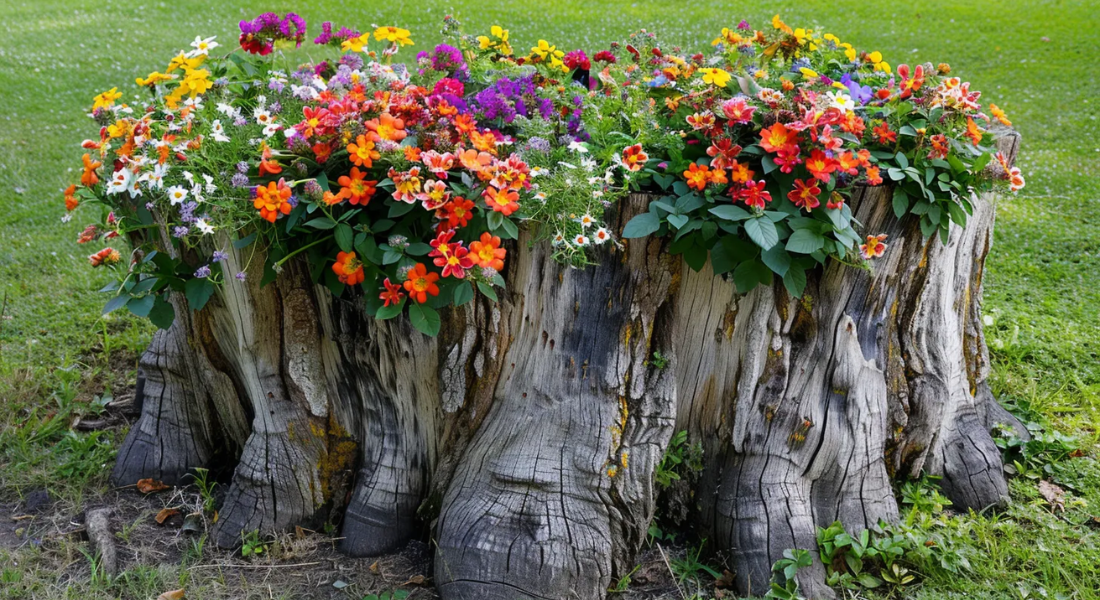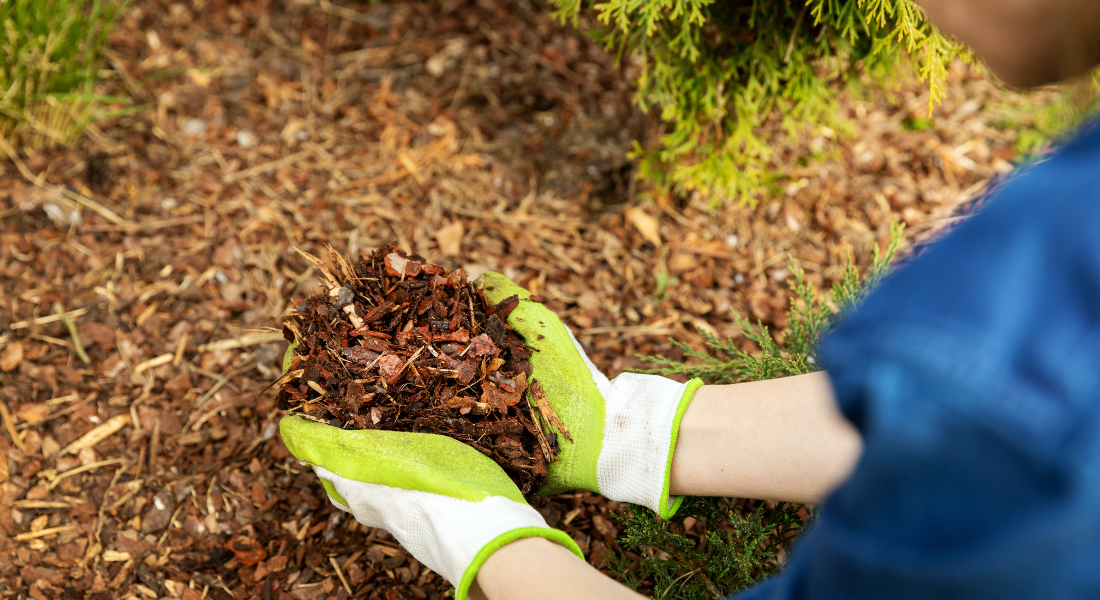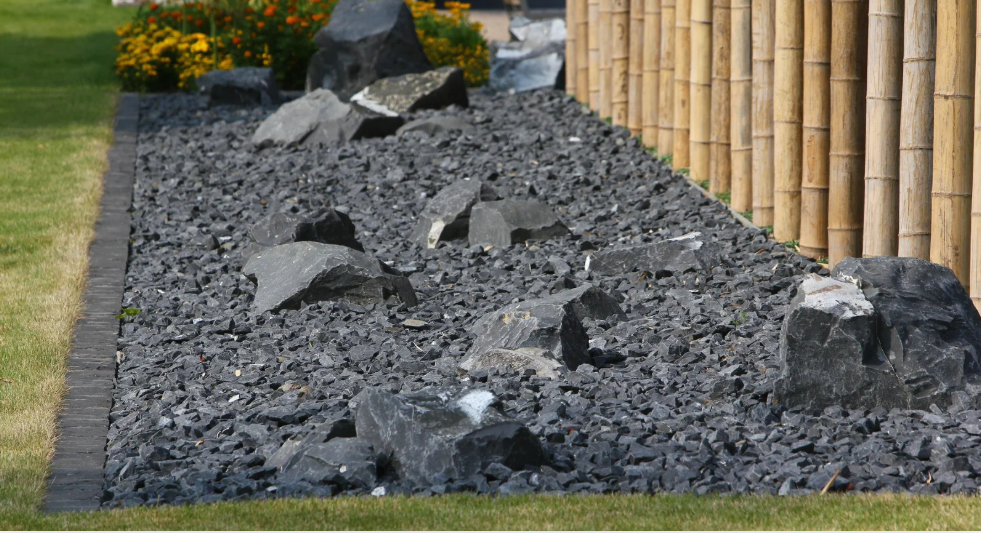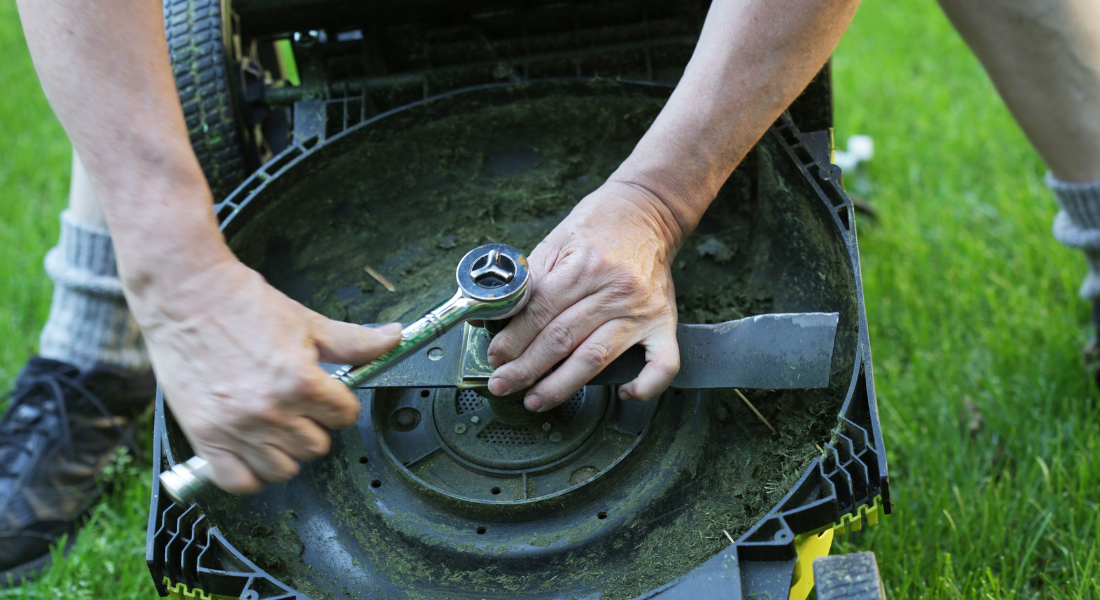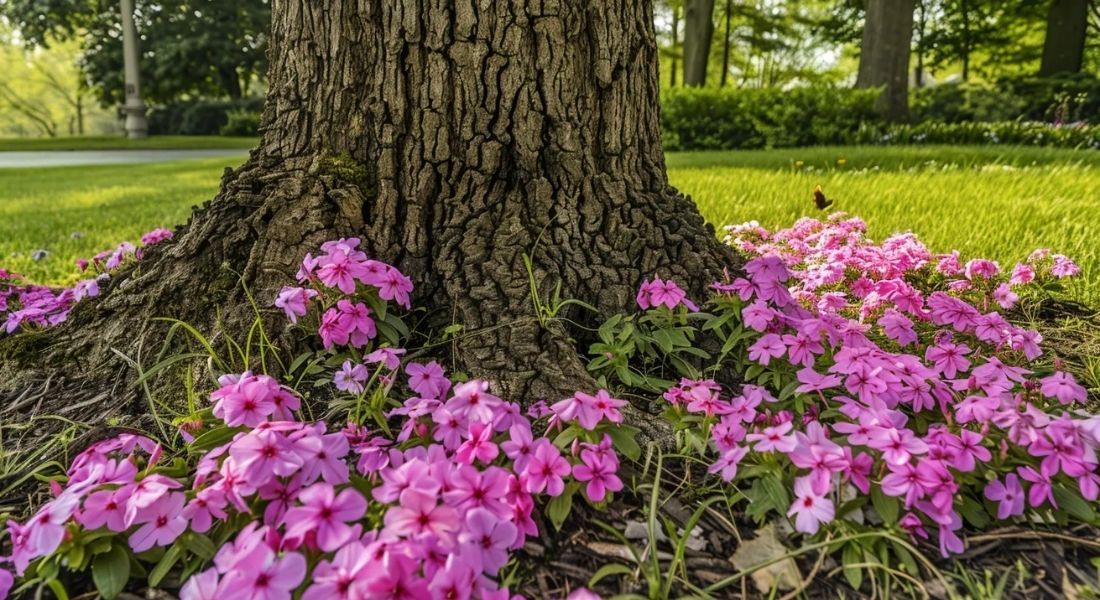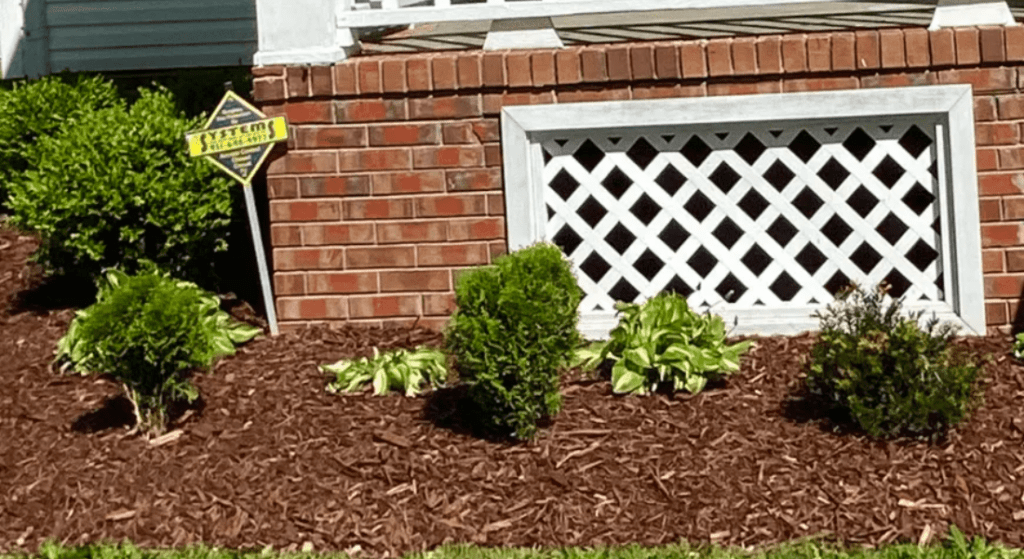The Best Way to Sharpen a Mower Blade: Keep Your Lawn Mower Performing Like New
A sharp mower blade is very important to get clean and even cuts.
If you mow your lawn with a dull blade, you might make your grass vulnerable to disease.
This guide will walk you through 3 ways to sharpen your mower blade (even for beginners). We will give you tips and show you the necessary tools and techniques so you can sharpen your mowing blade like new.
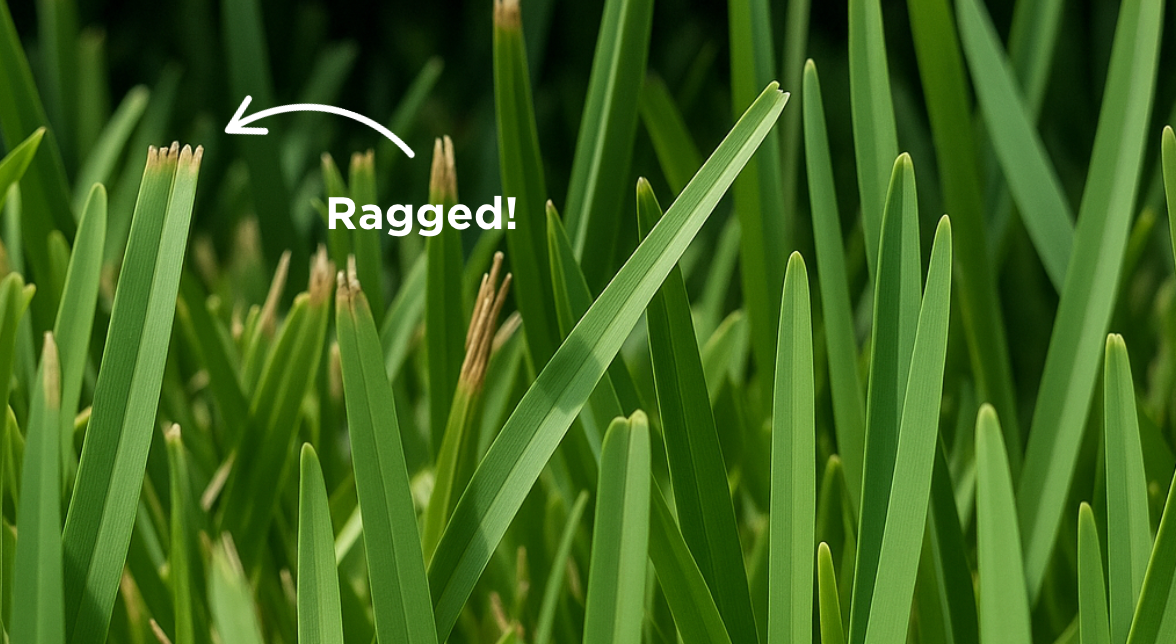
What are the signs you need to sharpen your mower blade?
After mowing, take a close look at the tips of the grass blades.
If they’re cleanly cut and smooth, your blade is in good shape. But if they look ragged or torn, it’s time to sharpen the blade.
Another sign that you need to sharpen the blade is increased strain on your lawn mower. You might notice the engine struggling or the mower not cutting as efficiently.
Inspect the edge of the blade; if you see nicks or the cutting edge is rounded rather than beveled, it's time to sharpen.
Dull mower blades can also damage your mower over time. The extra force required to mow wears out engine parts and consumes more fuel, reducing overall efficiency.
How often should you sharpen lawn mower blades?
For most homeowners, it's ideal to sharpen lawn mower blades at least once per season (usually before the first mow of the year).
However, if you're mowing thick or rough grass, or if your yard has debris like sticks and stones, you will need to sharpen it more frequently.
So, make sure to inspect your mower blade every few mows. Regular checks help prevent performance issues and extend the life of both the blade and mower.
What tools do you need to sharpen a lawn mower blade?
You don't need a full workshop, but having a basic tool kit makes the process smoother. Here's what you'll need:
- Socket wrench or hand-held wrench to remove the nut
- Clamp or vise to hold the blade securely
- Grinder, angle grinder with flap, bench grinder, or a blade sharpener
- Sharpening stone or flat file if you use a file
- Eye protection for safety
- Blade balancer or a nail in a wall to test balance
- Rag and mild soap to clean the blade
Advanced users might consider a mower blade sharpener 15°-45° adjustable or visit Home Depot or Harbor Freight to upgrade their setup.
How to safely remove the mower blade?
First, disconnect the spark plug wire to prevent accidental starting. Then, tilt the lawn mower on its side, with carburetor side up, to avoid leaks.
Use a socket wrench to remove the nut holding the mower blade in place. Clamp the blade with a block of wood or a vise to prevent rotation.
Mark the bottom of the blade before removal so you know which side faces down when you reinstall it. Improper installation can ruin your cut and harm your mower.
What’s the best way to clean the blade before sharpening?
Before you sharpen, it's critical to clean the blade. Use a rag and soapy water to remove built-up grass, dirt, and debris. For tough grime, a wire brush or steel wool works well.
Cleaning helps expose the cutting edge and makes it easier to evaluate the blade's condition. Sharpening a dirty blade wears down your tools and makes the process less effective.
Experts on the Tormek community forum emphasize the importance of cleanliness for efficient grinding and even wear on your tools.
Should you use an angle grinder, file, or blade sharpener?
Each method to sharpen the blade has its pros and cons:
- Angle grinder: Fast and effective, especially with a flap disc or flap wheel, but requires a steady hand to maintain the correct angle.
- Bench grinder: Great for precision but can remove the burr or too much metal if not careful. Best when you use a bench grinder for consistent results.
- Blade sharpener jig: Keeps the angle of the blade consistent. A mower blade sharpener 15°-45° adjustable jig is perfect for beginners.
- File to sharpen: Slower but safer. A flat file is best for minor touch-ups and thin lawnmower blade edges.
Many find that using a grinder with a flap offers a balance between speed and control when used properly.
What is the correct angle to sharpen a mower blade?
The bevel angle of most mower blades falls between 30° and 45 degrees. Sticking to the factory angle ensures optimal cutting and minimizes removing material unnecessarily.
Use a jig or a dedicated lawn mower blade sharpener 15°-45° to maintain the sharpening angle. Over-grinding or changing the angle of the blade affects the cut and balance.
Always grind or sharpen using as little metal as possible to preserve blade life and reduce heat that could warp the metal.
How to use a lawn mower blade sharpener 15°-45° for best results?
A mower blade sharpener 15°-45° adjustable is a precision tool designed to keep your blade edge consistent. These sharpeners have built-in guides that align with your blade's bevel, making the process straightforward.
Mount your blade into the sharpener jig and set the desired sharpening angle. Start grinding with steady pressure, moving across the cutting edge smoothly. Always remove the burr on the opposite side after grinding.
This tool is especially useful for those new to sharpening mower blades and is recommended in many threads on the community dedicated to lawn care forums.
Why balancing your blade after sharpening is essential?
After you sharpen, it's crucial to test your mower blade balance. An imbalanced blade causes vibration, and uneven cuts, and can damage your mower over time.
Place the blade on a blade balancer or balance it on a nail. If one side dips, grind a little more from that side. Balancing prevents wobble and ensures an even mow across your lawn.
This step is quick but vital. Even the sharpest blade won't work properly if it's off-balance.
How to reinstall the blade and test your mower?
After sharpening and balancing, it's time to reinstall the mower blade. Align it the same way it came off (remember the mark you made earlier). Use a socket wrench to tighten the nut securely.
Reconnect the spark plug and test the lawn mower on a small patch. You should notice smoother, cleaner cuts and less engine strain. That's the benefit of a sharp mower.
Regular lawn maintenance, including sharpening mower blades, improves the health of your grass and extends the life of your mower.
Need Some Help With Your Lawn?
If you are having a rough day and need help with mowing your lawn, GreenLife Services is here for you.
We’re happy to take care of the yard so you can focus on other things. We are a team of professionals and we always give 100% on lawn care.
And if you’d rather do it yourself, that’s cool too. Just know we’re around if you ever need a hand.
Key Takeaways: How to Sharpen Lawn Mower Blades
- Dull mower blades lead to ragged cuts and lawn damage.
- Inspect your lawn mower blade every few mows; sharpen every 20–25 hours.
- Always disconnect the spark plug wire before blade removal.
- Use a clamp, grinder, or blade sharpener to maintain safety and precision.
- Clean the blade before you sharpen it for better results.
- Maintain the correct angle—typically between 30° and 45°.
- Use tools like the mower blade sharpener 15°-45° adjustable for consistent sharpening.
- Check blade balance using a blade balancer before reinstallation.
- A sharp mower blade improves cut quality and keeps your lawn mower in great shape.
- Join a forum community dedicated to lawn care like the Tormek community forum for expert tips and support.
Now, do you know that mowing wet grass might hurt your grass? We have other blogs covering this whole topic. Read our blog here: Can You Mow Wet Grass? 5 Tips To Mow Your Wet Lawn.
FAQs
Q. What is the easiest way to sharpen a lawn mower blade?
A. The easiest way is to use a sharpening stone or a file while the blade is secured in a vice. If you prefer less manual work, a blade sharpening attachment on a drill or an angle grinder also works well. Just make sure to wear gloves and eye protection.
Q. Is sharpening lawn mower blades worth it?
A. Absolutely. Sharp blades give you a cleaner cut, which is better for your grass and your mower. Dull blades tear the grass instead of slicing it, leading to brown tips and a stressed lawn. Sharpening also helps your mower run more efficiently.
Q. Can you sharpen lawn mower blades without taking them off the mower?
A. Yes, you can—but it’s not ideal. While it’s possible to sharpen the blade while it’s still attached, removing it gives you better access and a safer, more even result. If you do it while it’s on the mower, make sure the spark plug is disconnected for safety.
Q. Should you sharpen both sides of a lawn mower blade?
A. Nope—just the cutting edge. Only one side of the blade is meant to be sharpened. The other side should remain flat to maintain the correct cutting angle and balance.
